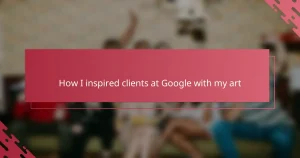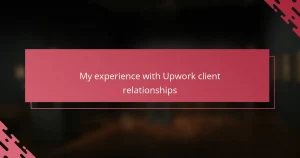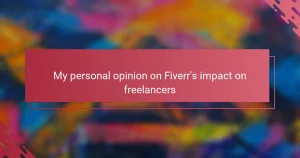Key takeaways
- An illustrator portfolio should tell a coherent story, showcasing your unique style while appealing to potential clients.
- Consistency in style and intentional selection of pieces enhance the portfolio’s impact, demonstrating both versatility and identity.
- Effective presentation techniques, such as a clean layout and engaging storytelling, can significantly impress clients, making the experience feel collaborative.
- Preparation and openness to feedback are crucial for building confidence and refining your approach when presenting work to clients.
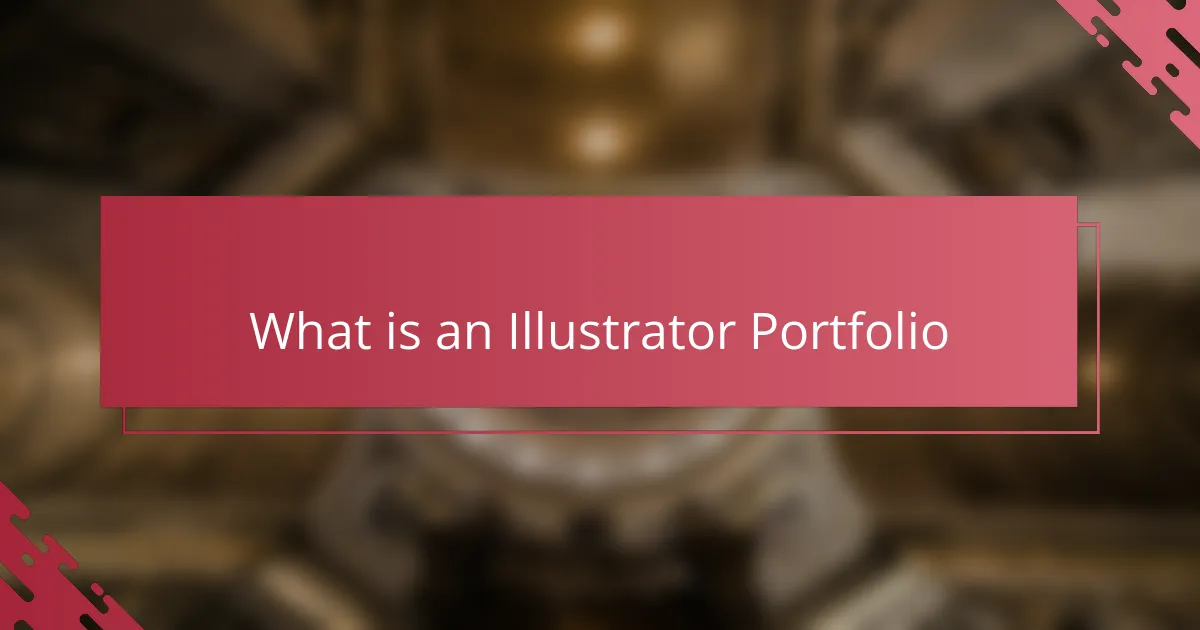
What is an Illustrator Portfolio
An illustrator portfolio is essentially a collection of your best artwork, carefully curated to showcase your unique style and skills. I’ve found that it’s not just about displaying pretty pictures; it’s about telling a story through your visuals—your story. Have you ever wondered how to capture someone’s attention in just a few images? That’s the power a strong portfolio holds.
When I first started building mine, I realized it was like creating a visual resume. It’s a way to communicate your creative voice without saying a word. Each piece you include needs to resonate with who you are as an artist, but also speak to potential clients or collaborators on a deeper level.
An effective illustrator portfolio doesn’t have to be overwhelming or stuffed with every piece you’ve ever made. In fact, I’ve learned that less is often more. Selecting work that aligns with the kind of projects you want to attract makes your portfolio feel intentional and focused, which is what really draws people in.
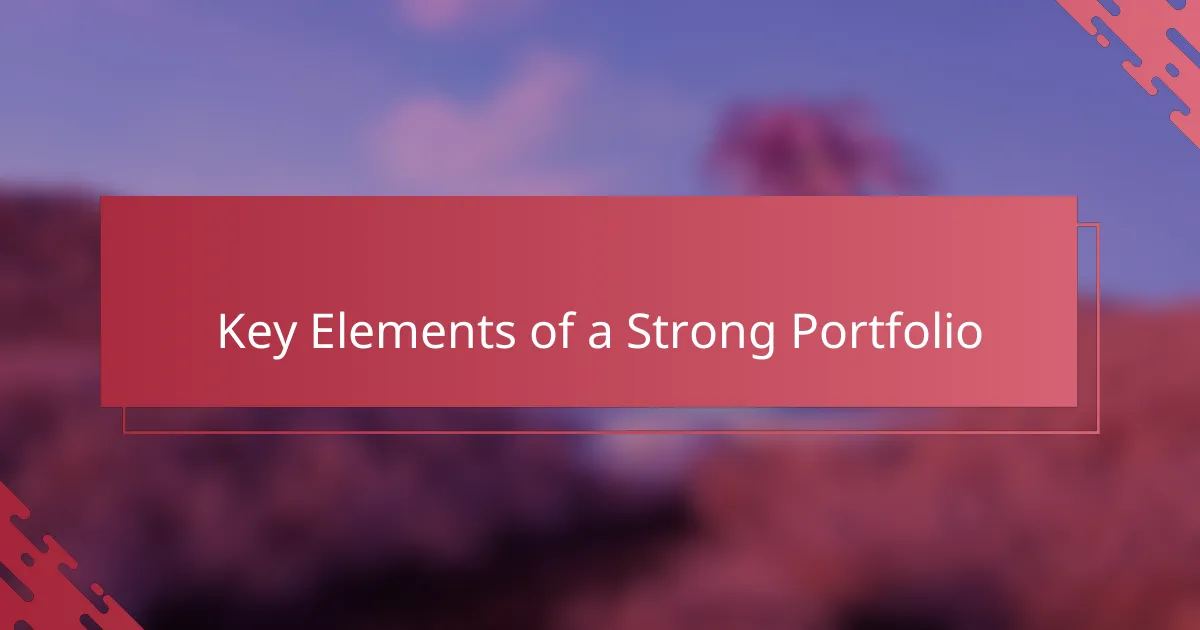
Key Elements of a Strong Portfolio
One thing I quickly noticed is that a strong portfolio needs consistency. Have you ever flipped through a collection and felt confused by the wildly different styles? That disconnect can make it hard for clients to understand your signature. When I aligned my work around a clear style and theme, it became easier for Coca-Cola’s team to see how I could fit into their brand vision.
Another key element is showcasing versatility without losing your identity. I used to think this meant showing off every skill I had, but it actually meant selecting pieces that demonstrated different approaches within my core style. This balance gave Coca-Cola confidence that I could adapt while keeping my unique artistic voice intact.
Finally, presentation matters just as much as the artwork itself. I spent extra time arranging my portfolio so that each piece led naturally to the next, almost like a story unfolding. Have you ever been drawn into a series that simply flows? That’s the kind of experience I aimed to create, and it made a big difference in holding the viewer’s attention.
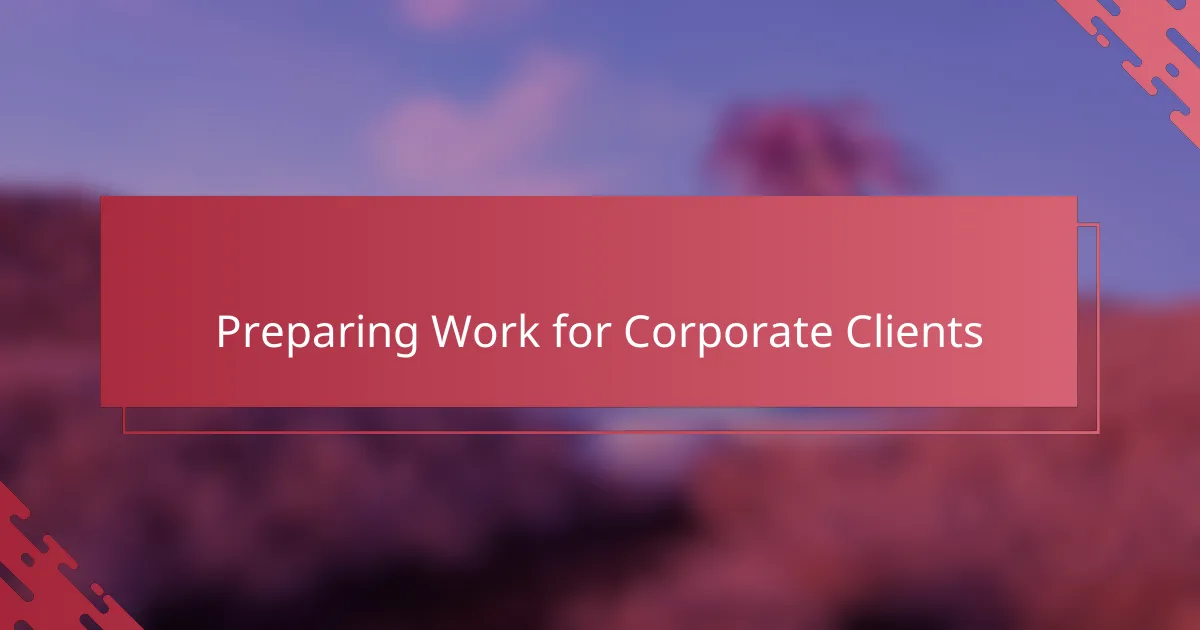
Preparing Work for Corporate Clients
When preparing work for corporate clients like Coca-Cola, I quickly learned that attention to detail is non-negotiable. Every color choice, every line, had to reflect not only my style but also the client’s brand identity. Have you ever felt that nervous excitement when you realize a single element could either make or break the whole presentation? That was exactly my experience.
I also found that tailoring my work specifically for the client’s industry showed respect and understanding, which resonated deeply with their team. Instead of throwing in everything I’d ever created, I carefully selected pieces that echoed Coca-Cola’s vibrant, fresh energy—making it easier for them to envision how my illustrations could live within their marketing collateral.
One small but crucial habit I developed was double-checking all files for consistency in format and quality before sending them off. It might sound tedious, but I can’t stress enough how this extra layer of polish elevated my credibility. Do you think a client notices these subtle touches? From where I stand, they absolutely do.
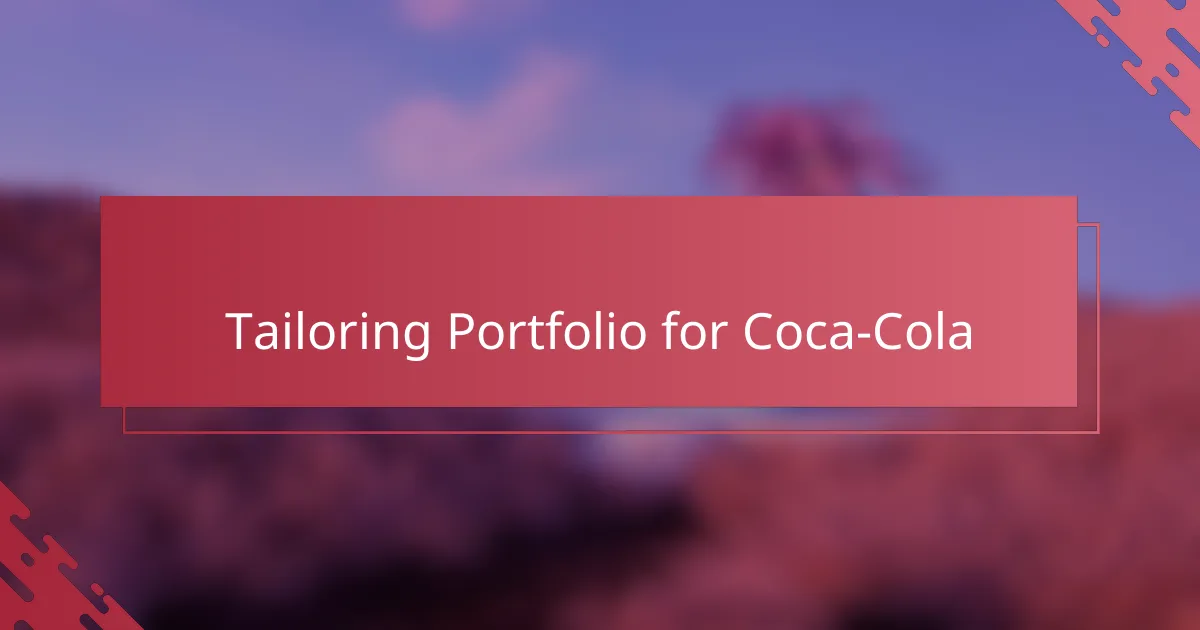
Tailoring Portfolio for Coca-Cola
Tailoring my portfolio specifically for Coca-Cola meant diving deep into their brand personality. I asked myself, what makes Coca-Cola’s visual language so iconic? That led me to emphasize bold colors and playful, energetic compositions that echoed their spirit. It felt like crafting a visual handshake—friendly, confident, and instantly recognizable.
I also realized that showing versatility had to be strategic. How could I demonstrate adaptability without diluting my style? By selecting work that felt cohesive yet hinted at different moods and concepts, I struck a balance that made Coca-Cola’s team see potential in various campaign contexts. It was a moment of clarity when I saw my portfolio transform from a generic collection into a tailored narrative.
Finally, I approached the presentation with the mindset of telling a story that felt both authentic and relevant. Each piece was a chapter, leading the viewer through my creative vision aligned with Coca-Cola’s values. Have you ever experienced that satisfying flow when everything just clicks? That sense of connection was exactly what I aimed for—and, judging by their response, it worked.
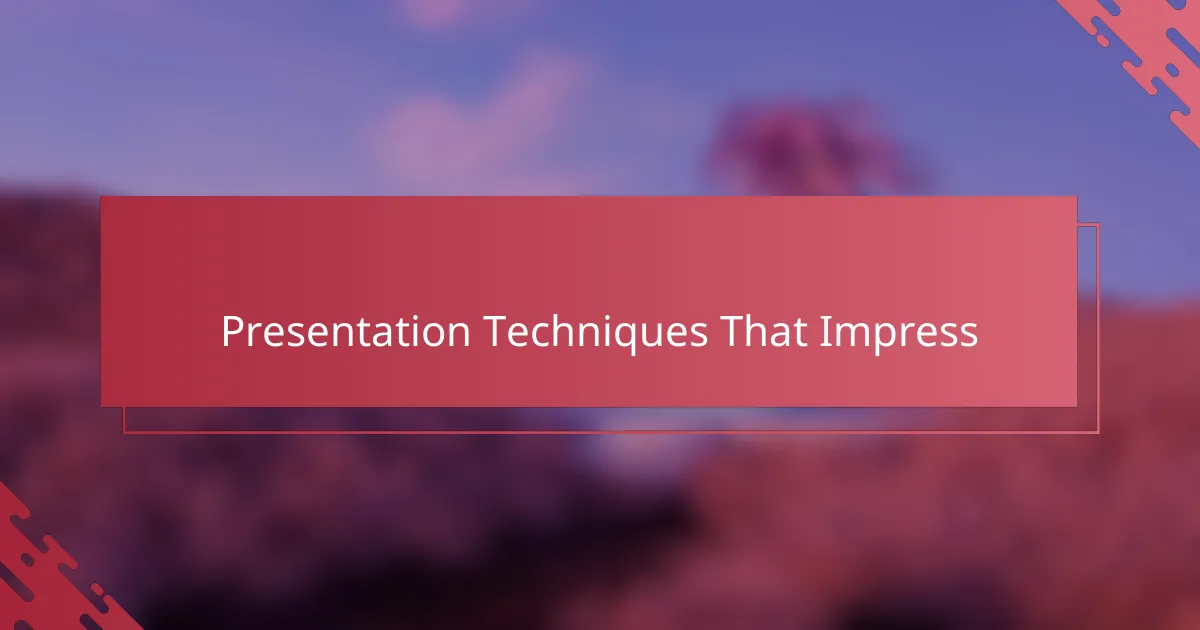
Presentation Techniques That Impress
When it comes to presentation, one technique that truly impressed Coca-Cola was using a clean, uncluttered layout. I made sure each piece had room to breathe, avoiding the temptation to cram too much in. Have you ever noticed how giving your artwork space actually makes it pop? That little shift in presentation can turn a glance into genuine admiration.
Another approach I found effective was narrating my creative process aloud during the meeting. It wasn’t just about showing finished pieces but sharing the “why” behind them—what inspired the colors or the composition choices. This storytelling element sparked curiosity and made the experience more engaging; it felt less like a pitch and more like a conversation.
Lastly, I paid close attention to how I physically delivered the portfolio. Holding the book confidently, flipping pages with intent, and making eye contact matters more than I expected. There’s something powerful about the energy you project when you truly believe in your work—it’s contagious. What I learned is that presentation isn’t just visual; it’s the entire performance.
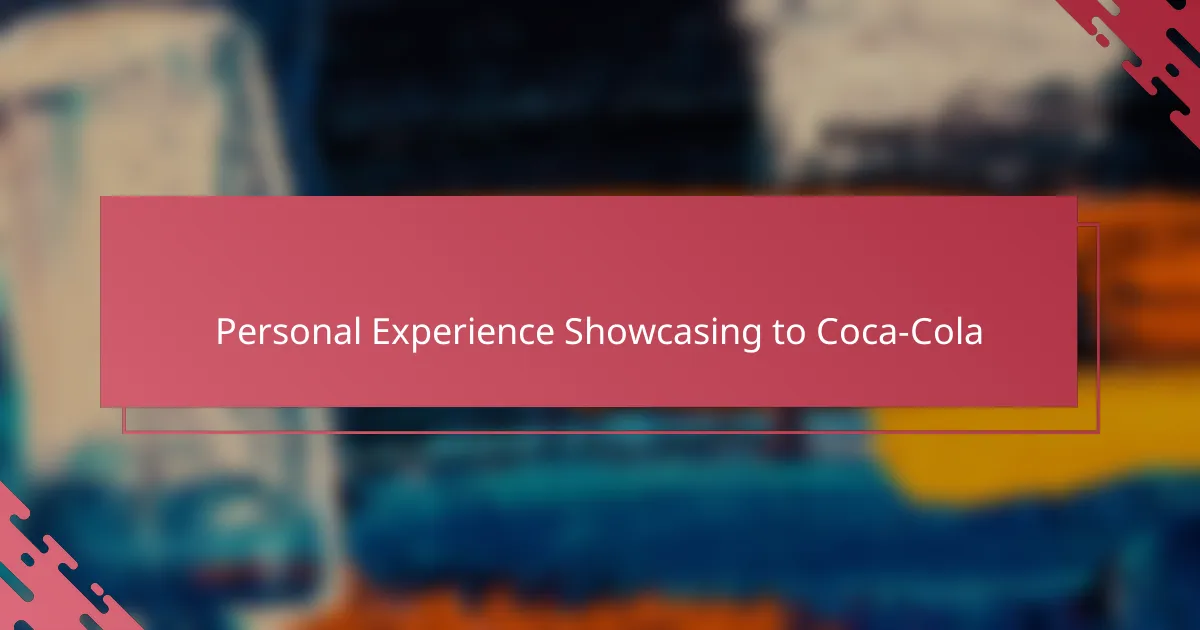
Personal Experience Showcasing to Coca-Cola
Showing my work to Coca-Cola was both thrilling and nerve-wracking. I remember feeling a rush of excitement mixed with a hint of doubt—would they connect with my style? But as I walked them through each piece, their engagement grew, which reassured me that my vision was resonating beyond just the visuals.
One moment that stayed with me was when I shared the story behind a vibrant, playful illustration inspired by their brand energy. Watching their eyes light up made me realize how powerful storytelling can be in showcasing art. Have you ever noticed how a simple anecdote can transform a static image into a shared experience? That interaction made all the prep work worthwhile.
Throughout the presentation, I focused on being authentic and approachable rather than overly formal. Holding the portfolio felt like holding a part of myself, and I found that genuine passion speaks volumes. Does confidence always come easy in these situations? For me, it took practice, but once I embraced it, the connection with Coca-Cola’s team felt natural and inspiring.
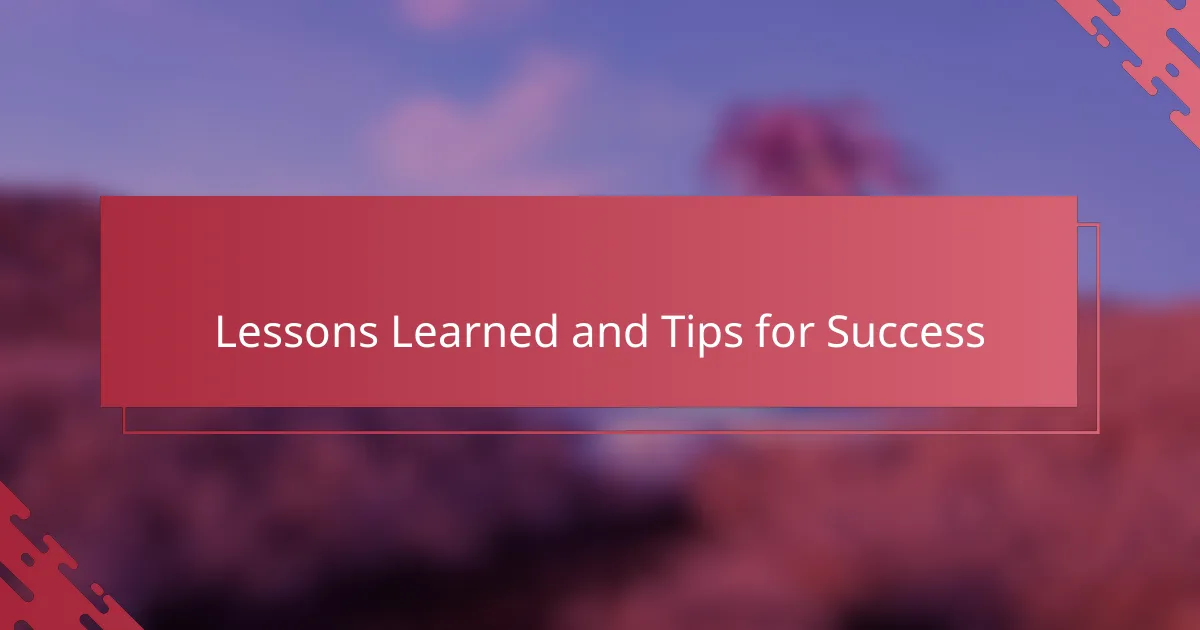
Lessons Learned and Tips for Success
One key lesson I took away was the importance of patience and persistence. At times, I questioned whether my approach was strong enough or if I was tailoring my portfolio effectively. But sticking with it, refining my work, and learning from each interaction ultimately built my confidence and sharpened my presentation.
I also learned that being open to feedback is a game changer. When Coca-Cola’s team offered suggestions, instead of feeling defensive, I embraced their input as a way to grow. Have you ever noticed how feedback, when welcomed, creates a collaborative vibe rather than just a critique? It made the process feel more like a partnership than a one-sided pitch.
Lastly, I can’t stress enough how preparation pays off. Knowing the client’s brand inside and out allowed me to anticipate their needs and questions. Whether it was rehearsing my talking points or double-checking every visual detail, that behind-the-scenes work made me feel grounded and ready. Have you ever walked into a meeting feeling truly prepared? That sense of control is priceless.
